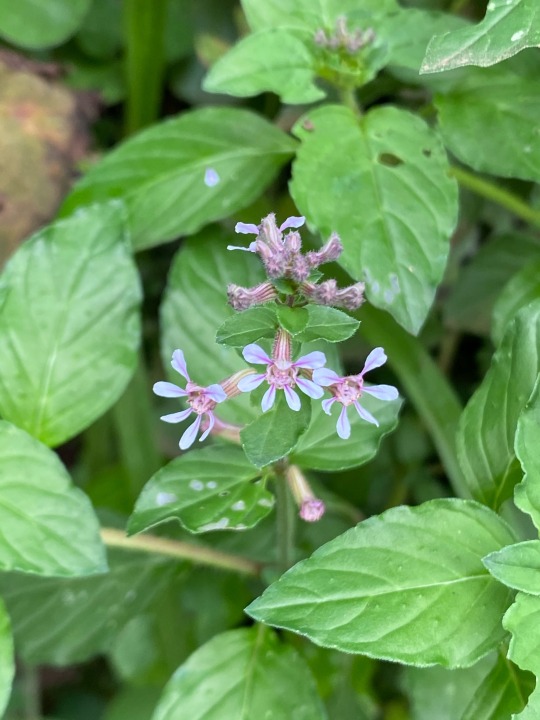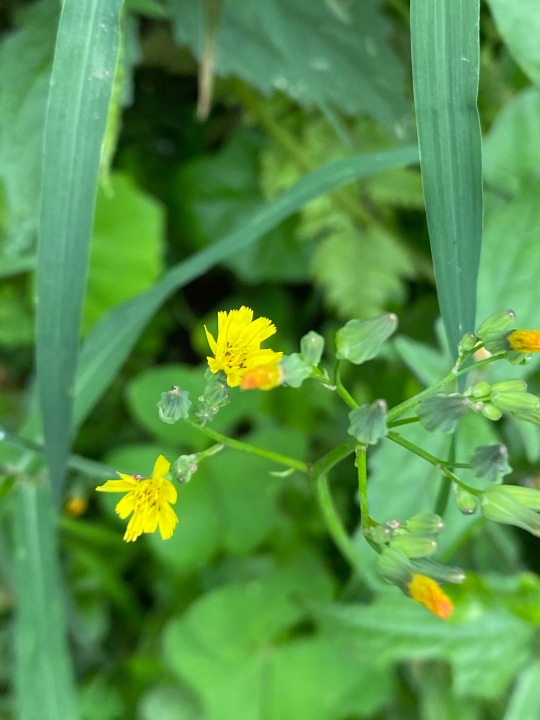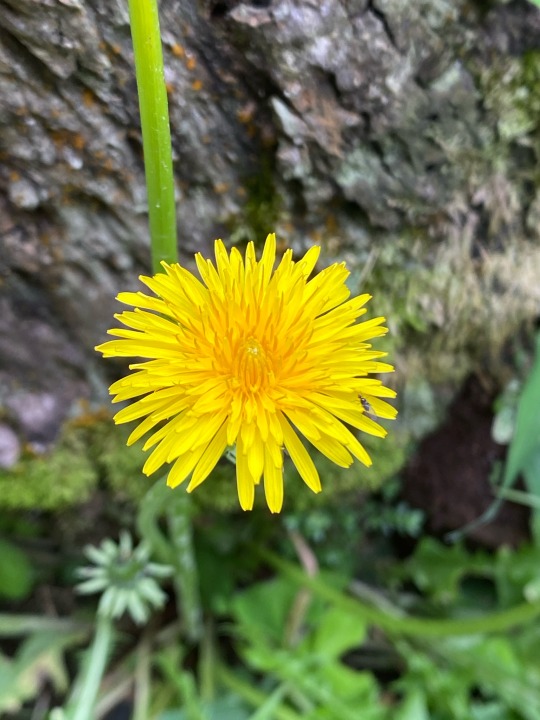#oxalis debilis
Text



ID: Oxalis debilis var corymbosa 🍀
90 notes
·
View notes
Text

Oxalis debilis / Largeflower Pinksorrel at the Sarah P. Duke Gardens at Duke University in Durham, NC
#Oxalis#oxalidaceae#Pink Sorrel#Plants#Flowers#Nature photography#photography#photographers on tumblr#Sarah P. Duke Gardens#Duke Gardens#Duke University#Durham#Durham NC#North Carolina#🌺🌻#Oxalis debilis#Largeflower Pinksorrel#Pink Wood-Sorrel#Pink woodsorrel
5 notes
·
View notes
Text

O – Oxalis debilis Kunth – Acetosella debole (Oxalidaceae)
19 notes
·
View notes
Text








-Cuphea racemosa (Moradita)
-Youngia japonica (Flequillo japonés)
-Arachis hypogaea (Maní)
-Browallia americana (Simpática)
-Taraxacum officinale (Diente de León)
-Bidens alba (Romerillo)
-Oxalis debilis (Trébol)
-Emilia fosbergii (Clavelillo)
#plantas#plantasornamentales#plantasornamentais#jardineria#flor#jardin#gardeners on tumblr#naturaleza#flores#garden#plantasdeinterior#plants#plantblr#indoor plants#trebol#clavel#flores silvestres#cali#colombia
5 notes
·
View notes
Text
Bidens pilosa Linn. Aqueous Extract against Postharvest Fungal Pathogens

Abstract
A bioassay was conducted to assess the antifungal effects of the different concentrations of Biden pilosa Linn. aqueous extract against fungal pathogens isolated from corn and peanut seeds. The assay employed the disk diffusion technique to determine the effects of the diffusible metabolites from B. pilosa on the growth of the fungal species on potato dextrose agar (PDA). The aqueous extract showed significant activity against Aspergillus flavus, A. niger, Fusarium sp., and Penicillium sp. from corn seeds. The best antifungal activity was observed in A. niger with inhibitory zones as wide as 19.72mm in diameter. On the other hand, the fungal isolates from peanut namely, A. flavus, A. niger, Penicillium sp., and Rhizopus stolonifer showed sensitivity to the aqueous extract from B. pilosa. The best antifungal activity was recorded in Penicillium sp. with the widest zone of inhibition of 24.87mm at 24 hours after incubation (HAI). This in vitro study, therefore, confirms that the B. pilosa aqueous extract inhibits the growth of fungal species associated with corn and peanut seeds.

Introduction
Corn and peanut seeds are vulnerable to pathogenic fungal species before and after harvesting. Their association with the stored seeds may eventually result in the deterioration of seed quality. Although stored seeds apparently look healthy because of the absence of physical damage, however, these may be contaminated with high levels of mycotoxins produced by certain species of fungal pathogens. Mycotoxins are fungal metabolites that cause grain quality deterioration, poor germination potential, and reduced vigor. To prevent these problems, different control strategies should be employed such as irradiation, chemical treatment, and biological control. However, irradiation of seeds before storage is costly while the application of chemical treatments poses hazards to humans and animals. With these issues at hand, one of the promising options is the application of botanical pesticides.
Several studies had been conducted on the use of weed extract to control the growth of plant pathogenic organisms. The water extracts from the weed species (A. conyzoides, Oxalis corniculata, Phyllanthus debilis, Vernonia cinerea, and Desmodium trifolium) were assayed for their antifungal activity against some plant pathogenic fungi (Iqbal et al., 2001).
The extract from A. conyzoides inhibited the mycelial growth of Rhizoctonia solani, Aspergillus niger, and Phomopsis theae. In another study, the extract from O. corniculata was active against A. niger while P. debilis suppressed the growth of P. theae. The activity generally declined after three days of incubation, while A. conyzoides remained active for nine days after incubation. Ethanolic extract of Datura stramonium also contains significant antifungal potential against some important plant pathogenic fungi and thus, could be used as an alternative to chemical fungicides for the management of fungal infection in plants (Sharma et al., 2014).

There were previous studies on Bidens pilosa, a common weed species in the tropics, focusing on its antibacterial effects against human pathogens. Silva et al. (2014) evaluated nine extracts from B. pilosa (root, stem, flower, and leaves) and Annona crassiflora (rind fruit, stem, leaves, seed, and pulp) against 60 oxacillin resistant Staphylococcus aureus (ORSA) and S. aureus ATCC6538. They found that extracts from the leaves of B. pilosa had significantly wider inhibition zone diameters than chlorexidine against ORSA, and the extracts were more active against S. aureus ATCC. The presence of variable alkaloids, flavonoids, tannins, and saponins was observed which may be responsible for its antibacterial activities.
The antifungal properties of B. pilosa were documented in some studies involving plant pathogenic fungal species. Deba et al. (2007) first evaluated the antifungal potential of this plant against Corticium rolfsii, Fusarium solani, and Fusarium oxysporum using the hot water extracts from the roots, stem, and leaves. They found that C. rolfsii was most suppressed as its growth was reduced almost all the tested doses followed by F. oxysporum and F. solani. Extracts from stems and roots exhibited greater fungicidal action than the extracts from the leaves. In another experiment, the team also demonstrated the antifungal effects of the essential oils and aqueous extracts from the flowers and leaves of B. pilosa using the three fungal species. They again concluded that the extracts and oils had antifungal activity on the fungal pathogens (Deba et al., 2008).
Polyacetylenes, polyacetylene glycosides, flavonoids, flavone glycosides, aurones, chalcones, okanin glycosides, phenolic acids, terpenes, pheophytins, fatty acids, and phytosterols are among the chemical ingredients identified or isolated from the various portions of B. pilosa (Xuan & Khanh, 2016). Many of these have been identified as bioactive chemicals with pharmacological potential.
According to Silva et al. (2011), as cited by Bartolome et al. (2013), 201 compounds have been identified from this plant as compiled previously, comprising of 70 aliphatics, 60 flavonoids, 25 terpenoids, 19 phenylpropanoids, 13 aromatics, 8 porphyrins, and 6 other compounds.
This study focused on the assay of B. pilosa aqueous extract against common fungal pathogens associated with corn and peanut seeds. The antifungal effect of the extract was determined under in vitro conditions.
Source : Bidens pilosa Linn. Aqueous Extract against Postharvest Fungal Pathogens | InformativeBD
1 note
·
View note
Photo

石垣の隙間に咲くムラサキカタバミ
16 notes
·
View notes
Photo

Don’t usually photograph plants on their own, really only when I see a scene that looks nice.
Oxalis debilis
26/08/21
#Oxalis debilis#Largeflower Pink-Sorrel#Oxalis#outside entomology#plants#Plantae#flowers#flower#cute#nature#nature aesthetic#photography#amateur photography#Aesthetic#aesthetics
8 notes
·
View notes
Text

Oxalis debilis
0 notes
Photo


Pink woodsorrel (Oxalis debilis)
29 notes
·
View notes
Photo

#Violet woodsorrel#Oxalis debilis var. corymbosa#Oxalis corymbosa#fern#leaf#Nokton 25mm F0.95#ムラサキカタバミ
2 notes
·
View notes
Photo






琵琶湖疎水(胡瓜草、紫鷺苔、紫酢漿、里桜と雉鳩)
#Pentax *istD#FA macro 50mm F2.8#kyoto#Trigonotis peduncularis#Mazus miquelii#ムラサキサギゴケ#Oxalis debilis var. corymbosa#ムラサキカタバミ#Prunus serrulata#cherry blossom#Turtledove#2005#April#4月#Lake Biwa canal#lamp#shadow
0 notes
Photo

Oxalis debilis. Vinagrillos rosas. by fernando aragón https://flic.kr/p/2kAKDhT
20 notes
·
View notes
Photo

Oxalis debilis © Mykhailo Hladchenko
Oxalis debilis, the large-flowered pink-sorrel or pink woodsorrel, is a perennial plant and herb in the family Oxalidaceae. Its original distribution is South America but has become a very cosmopolitan species, occurring in all continents except Antarctica. It can be found in both temperate and tropical areas.
12 notes
·
View notes
Text
Pink woodsorrel! Botanical name is “Oxalis debilis”

Oxalis is a nutritious plant that provides important micronutrients that help maintain healthy strength, skin, and immune function. Both the flower, leaves, and root are edible! Make sure to keep these plants out of reach of cats and dogs and horses. As they are poisonous to them if they eat too many and can become mild. This is a plant containing oxalic acid, so please pay attention to how many you eat.
Although it has its positives, it also has its negatives. Such as being an invasive weed. Because of its unique ornamental leaves and flowers, it sometimes grows in the garden with strong expansion ability. And they are able to propagate through underground stems! No wonder they’re so invasive, they’re multiplying without us even seeing!
3 notes
·
View notes
Text
What’s a Shamrock?
There is no overwhelming scientific consensus on which species is the well-known Irish national emblem. There was survey of Irish botanists in the early 1890s asking which species was the “true” shamrock. A similar survey was repeated in 1988. The results suggest the shamrock is either Trifolium dubium(aka “lesser trefoil”) or Trifolium repens (aka “white clover”). The plants commonly sold around St. Patrick’s Day as “shamrocks” or “4-leaf clovers” are in the plant genus Oxalis(“wood sorrel”), which belong to different plant family than true clovers.

Top left: Trifolium repens (collected 1974 in Louisiana), aka “white clover”
Top right: Trifolium dubium (collected 1961 in Pennsylvania), aka “lesser trefoil”
Bottom left: Oxalis tetraphylla (collected 1981 in India), aka “lucky clover,” although not a true clover
Bottom right: Oxalis debilis (collected 1989 in cultivation), aka “pink woodsorrel”
These specimens were recently imaged (along with many others in the legume family, Fabaceae) and are publicly available online.
Check back for more! Botanists at the Carnegie Museum of Natural History share digital specimens from the herbarium on dates they were collected. They have embarked on a three-year project to digitize nearly 190,000 plant specimens collected in the region, making images and other data publicly available online. This effort is part of the Mid-Atlantic Megalopolis Project (mamdigitization.org), a network of thirteen herbaria spanning the densely populated urban corridor from Washington, D.C. to New York City to achieve a greater understanding of our urban areas, including the unique industrial and environmental history of the greater Pittsburgh region. This project is made possible by the National Science Foundation under grant no. 1801022.
Mason Heberling is Assistant Curator of Botany at the Carnegie Museum of Natural History. Museum employees are encouraged to blog about their unique experiences and knowledge gained from working at the museum.
#Carnegie Museum of Natural History#St. Patrick's Day#St. Patty's#St. Patty's Day#Clover#Shamrock#Four-leaf clover#Botany#Plants
53 notes
·
View notes
Photo

【庭】ムラサキカタバミが咲いている。子供の頃、実家の庭にもよく生えていた。
2 notes
·
View notes